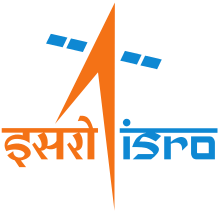Satish Dhawan
| Satish Dhawan | |
|---|---|
 | |
| Born |
25 September 1920 Srinagar, Jammu and Kashmir, India |
| Died |
3 January 2002 (aged 81) India |
| Fields | Mechanical and aerospace Engineering |
| Institutions |
Indian Space Research Organisation Indian Institute of Science California Institute of Technology National Aerospace laboratories Indian Academy of Sciences and Indian Space Commission |
| Alma mater |
University of Punjab ( India) University of Minnesota California Institute of Technology |
| Doctoral advisor | Hans W. Liepmann |
| Known for | Indian space program |
| Notable awards | Padma Vibhushan |
Satish Dhawan (25 September 1920 – 3 January 2002) was an Indian aerospace engineer, widely regarded as the father of experimental fluid dynamics research in India. Born in Srinagar, Dhawan was educated in India and further on in the United States. Dhawan was one of the most eminent researchers in the field of turbulence and boundary layers, leading the successful and ingenious development of the Indian space programme. He succeeded M G K MENON, as chairman of the Indian Space Research Organisation (ISRO) in 1972.
Education
Dhawan was a graduate of the University of the Punjab in Lahore, India (now Pakistan), where he completed a Bachelor of Science in Physics and Mathematics, a Bachelors degree in Mechanical Engineering and a Master of Arts in English Literature. In 1947, he completed a Master of Science in aerospace engineering from the University of Minnesota, Minneapolis and an Aeronautical Engineering Degree from the California Institute of Technology followed by a double PhD. in mathematics and aerospace engineering under the supervision of his advisor Dr. Hans W. Liepmann in 1951.
As Chairman, ISRO (1972–1984)
Dr. Dhawan took over as Chairman of Space Commission and Chairman, Indian Space Research Organisation (ISRO)and Secretary to the Government of India at the Department of Space. In the year of 1975, when APJ Abdul Kalam was the director of a SLV mission, the mission failed to launch the satellite in the orbit. Instead it was put into Bay of Bengal. The team of Abdul Kalam knew that there is a leakage in the fuel of the system. Hoping that the leakage is negligible as they thought they have enough fuel in the system. This misinterpretation lead to the failure. Satish Dhawan being the chairman at the time, called Abdul Kalam and conveyed to press "We failed! But I have a very good trust in my team that next time we will be succeeding for sure". This surprised Abdul Kalam as the blame of the failure was taken by the chairman of ISRO. The next mission was prepared and launched successfully on 1980. At this moment of success, Satish Dhawan told Abdul Kalam to attend the press meet without his presence. When the team failed, he took the blame. But when the team succeeded, he redirected the success to his team, thus portraying the picture of a true leader as cited by APJ Abdul Kalam.
Director, IISc (1962–1981)
Dr. Dhawan joined as faculty at the Indian Institute of Science (IISc), Bangalore in 1951 and became its Director in 1962. Although he was the head of the Indian space programme, he devoted substantial efforts towards boundary layer research. His most important contributions are presented in the seminal book Boundary Layer Theory by Hermann Schlichting. He set up the country's first supersonic wind tunnel at IISc. He also pioneered research on relaminarization of separated boundary layer flows, three-dimensional boundary layers and trisonic flows.
Support of space research
Dhawan carried out pioneering experiments in rural education, remote sensing and satellite communications. His efforts led to operational systems like INSAT, a telecommunications satellite; IRS, the Indian Remote Sensing satellite; and the Polar Satellite Launch Vehicle (PSLV), that placed India in the league of space faring nations.
Honours
Following his death in 2002, the satellite launch centre at Sriharikota, Andhra Pradesh, located about 100 km north of Chennai in South India, was renamed the Satish Dhawan Space Centre. Satish Chandra Dhawan Govt. College , Ludhiana is named after him.
Career
- Senior Scientific Officer, 1951
- Professor and Head of the Department of Aeronautical Engineering, 1955
- Director, 1962–1981[1]
- Visiting Professor, 1971–72
- Chairman, Research council, 1984–93
- President, 1977–1979
- Chairman, 1972–1984
- Indian Space Commission
- Chairman, 1972–2002
Awards
- Padma Vibhushan (India's second highest civilian honour), 1981[2]
- Padma Bhushan (India's third highest civilian honour), 1971[2]
- Indira Gandhi Award for National Integration, 1999
- Distinguished Alumnus Award, Indian Institute of Science
- Distinguished Alumnus Award, California Insititute of Technology, 1969
Family
His daughter Jyotsna Dhawan, is a renowned molecular biologist.
Works
- Dhawan Satish: Direct measurements of skin friction. Tech. Rep No.1121, National Advisory Committee for Aeronautics, Washington DC 1953.
- Schlichting H, Gersten K: Boundary Layer Theory (8th Revised & Enlarged Edition). Springer, 1999.
- Dhawan S: A glimpse of fluid mechanics research in Bangalore 25 years ago. India: Surveys in fluid mechanics Indian Academy of Sciences (Eds. R Narasimha, S M Deshpande) 1-15, 1982.
- Developments in Fluid Mechanics and Space Technology. (Eds. R Narasimha, APJ Abdul Kalam) Indian Academy of Sciences, 1988.
- Dhawan S: Bird flight. Indian Academy of Sciences, 1991.
- Dhawan S: Aeronautical Research in India. (22nd British Commonwealth Lecture). J. Royal Aero. Soc. 71, 149-184, 1967.
- Special Section on Instabilities, transitions and turbulence. (Ed. R Narasimha) Current Science, 79:725-883, 2000
References
- ↑ "About IISc Heritage". Indian Institute of Science. Retrieved 13 September 2013.
- 1 2 "Padma Awards" (PDF). Ministry of Home Affairs, Government of India. 2015. Retrieved July 21, 2015.
- P.A. Davidson, Y. Kaneda, K. Moffatt, and K.R. Sreenivasan (eds, 2011). A Voyage Through Turbulence, chapter 11, pp 373–92, Cambridge University Press ISBN 978-0-521-19868-4
External links
| Government offices | ||
|---|---|---|
| Preceded by M. G. K. Menon |
ISRO Chairman 1972–1984 |
Succeeded by U. R. Rao |
